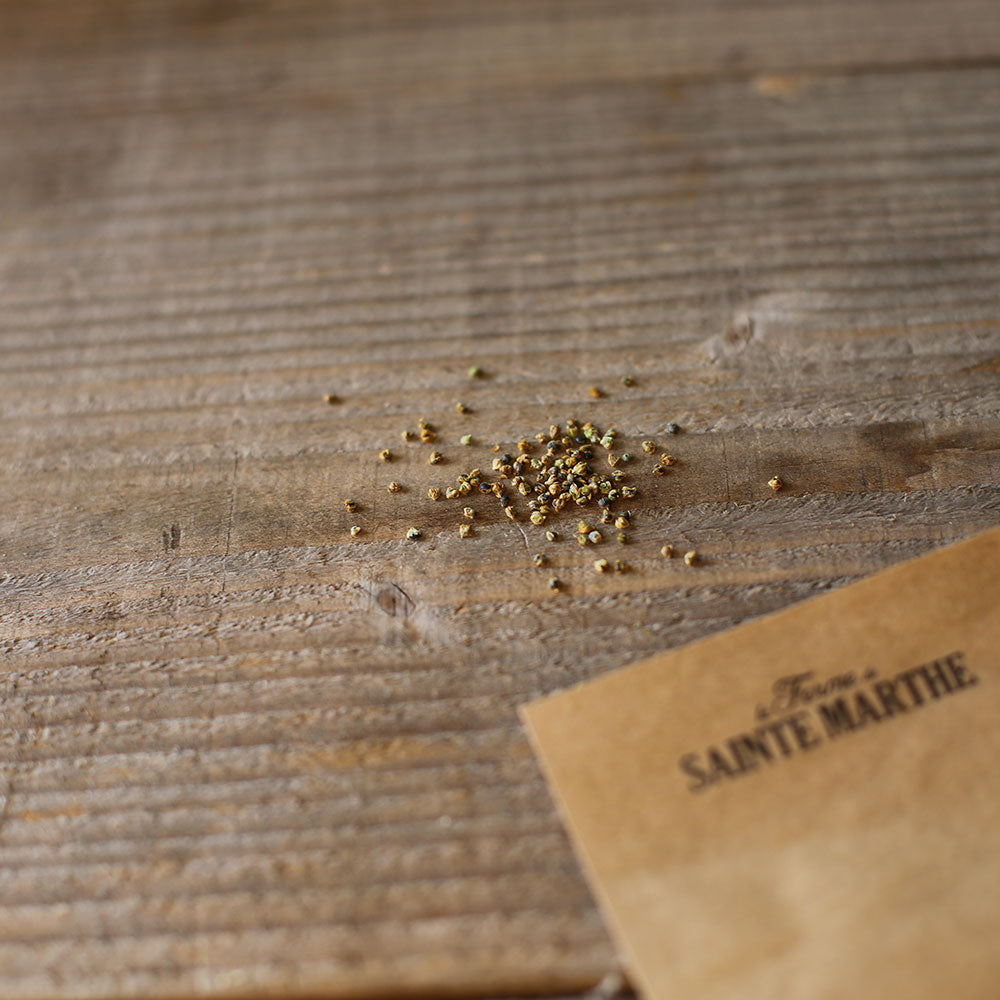CHENOPODE BON HENRI AB
Chenopodium bonus-henricus
Such a peculiar name requires an explanation! And it is The Rustica Treatise on Vegetable Varieties from the Ferme de Sainte Marthe , written by X. Mathias, published by Rustica, which sheds light on the subject:
A surprising etymology for this perennial, an authentic medieval harvest plant, owing its name to the old German gut Heinrich, Heinrich designating plants growing spontaneously around houses. Thus, this wild spinach renowned for its vermifuge virtues was called Good Henry , in opposition to another spontaneous weed in many vegetable gardens and which many gardeners know well, mercury, then called bad Henry .
The leaves of the Good Henry goosefoot are eaten exactly like those of spinach, the flower stems like asparagus.
Successful sowing of Good Henry goosefoot
Sowing: This plant, which is still relatively undomesticated, will prefer to be sown in place in the fall, at the end of August/September at 20°C/25°C. It is important to space the rows well, 40 to 50 cm apart. The first seedlings will appear in the fall, followed by a second wave after winter. Protect your seedlings well during this period from slugs!
It is also possible to sow in pots from March to April in order to be able to transplant at the 2 to 4 leaf stage and finally plant in May.
Planting in the vegetable garden
The Good Henry goosefoot will appreciate a sunny or partially shaded exposure in summer as well as fresh, deep, and rich soil. Leave at least 40 cm between each plant.
You can plant seedlings from late March to mid-October.
Cultivation of Bon Henri goosefoot
The Good Henry goosefoot will disappear in late autumn and reappear in spring. Cut back the flower stems to avoid blocking the growth of new leaves.
Water at the base. If you leave a few flowers, you'll have a good chance of seeing the goosefoot reseed itself.
Harvesting goosefoot
Harvest approximately 6 months after planting in the vegetable garden.
The leaves are harvested as needed, preferably in the morning, in spring and autumn (during summer, the leaves become too tough) for quick consumption. The leaves are eaten like spinach.
The flower stems can be eaten like asparagus.











